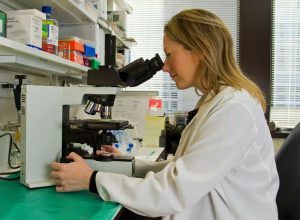Why Intelligent Traffic Systems Change Cities Forever
As technology continues to advance and shape our world, one area that has seen significant changes is our transportation system. From self-driving cars to ride-sharing services, these advancements have not only made our daily commute more convenient but have also revolutionized how cities operate. One such advancement that is rapidly gaining traction is Intelligent Traffic Systems (ITS). This modern solution to traffic management has the power to change cities forever. In this article, we will delve into the reasons why ITS is a game-changer and how it will transform the way we navigate through our cities.
The Problem with Traditional Traffic Systems
Before we explore the impact of ITS, it is essential to understand the challenges faced by traditional traffic systems. In the past, traffic management has primarily relied on manual devices such as traffic signals, stop signs, and speed limits. While these measures have helped to maintain a certain level of order on our roads, they have their limitations. Congestion, accidents, and environmental pollution have been persistent issues in cities that traditional traffic systems are struggling to combat.
Congestion
We have all been stuck in traffic jams that seem to have no end. Congestion not only causes frustration and delays but also has a significant economic impact. According to a study conducted by the Texas A&M Transportation Institute, traffic congestion cost the U.S. economy $166 billion and wasted 3.3 billion gallons of fuel in 2017 alone. With the population in cities continuing to grow, traditional traffic systems are struggling to keep up with the increasing demand for efficient transportation.
Accidents
Despite efforts to improve road safety, accidents continue to be a leading cause of death and injury globally. In the U.S., about 1.35 million people die in road accidents each year, and an additional 20-50 million are injured or disabled. The human error, which is responsible for 94% of all accidents, is something that traditional traffic systems are unable to eliminate completely.
Environmental Pollution
Transportation is one of the biggest sources of greenhouse gas emissions, which contribute to climate change. Traditional traffic systems play a significant role in this as vehicles are stuck in traffic for longer periods, resulting in increased fuel consumption and emissions. This not only adds to air pollution but also has a negative impact on public health.
Introducing Intelligent Traffic Systems
Intelligent Traffic Systems, also known as smart traffic systems, are a combination of technology and data that aim to improve traffic flow and reduce problems associated with traditional traffic systems. These systems utilize advanced sensors, cameras, and software to gather real-time data and inform traffic management control centers. The data collected is then used to optimize traffic flow by controlling traffic signals, managing lane closures, and providing real-time travel information to drivers.
How ITS Will Change Cities Forever
1. Reduced Congestion: With ITS, traffic lights can adapt and change based on real-time traffic conditions, reducing the time spent at a red light. This leads to smoother traffic flow, reducing congestion and travel time for commuters.
2. Increased Safety: ITS utilizes technologies such as lane departure warning systems, speed sensors, and adaptive cruise control to assist drivers and minimize the risk of accidents. This technology can also detect and respond to potential hazards, helping to prevent accidents.
3. Improved Efficiency: ITS provides real-time traffic data to drivers, allowing them to make informed decisions about their route. This not only helps to reduce travel time but also reduces fuel consumption and emissions, resulting in a more efficient transportation system.
4. Better Planning: The data collected by ITS can be analyzed to identify problem areas and make informed decisions on future road development and improvement projects. This will lead to a more efficient use of resources and decreased costs for cities.
5. Sustainable Cities: With reduced congestion and emissions, ITS plays a significant role in creating more sustainable cities. Less time spent on the road means less fuel consumption and ultimately, a positive impact on the environment.
Conclusion
Intelligent Traffic Systems are a game-changer for cities. They have the potential to significantly improve our transportation system, reduce congestion, and create more sustainable cities. With the continuous advancements in technology, we can expect to see even more innovative solutions in the future. As we embrace these changes, we must also ensure that proper regulations and standards are in place to ensure the safe and responsible use of ITS. Only then can we fully harness the potential of this modern technology and pave the way for a better, smarter, and more efficient future for our cities.











